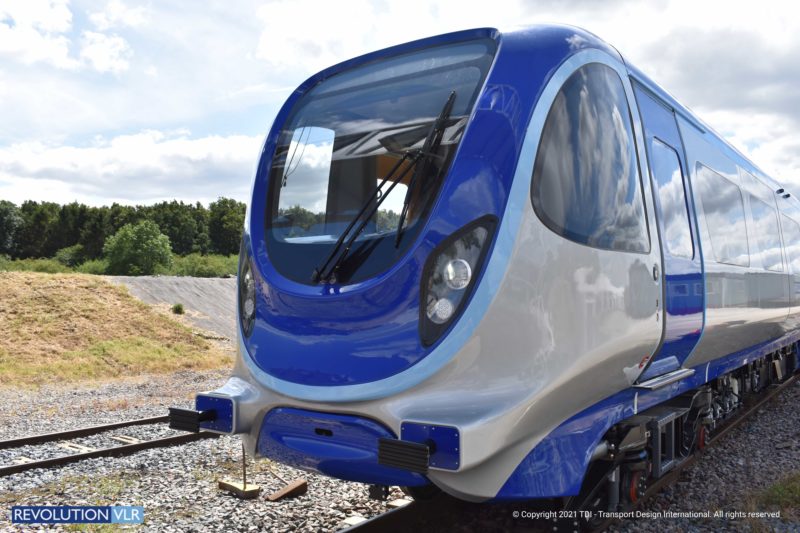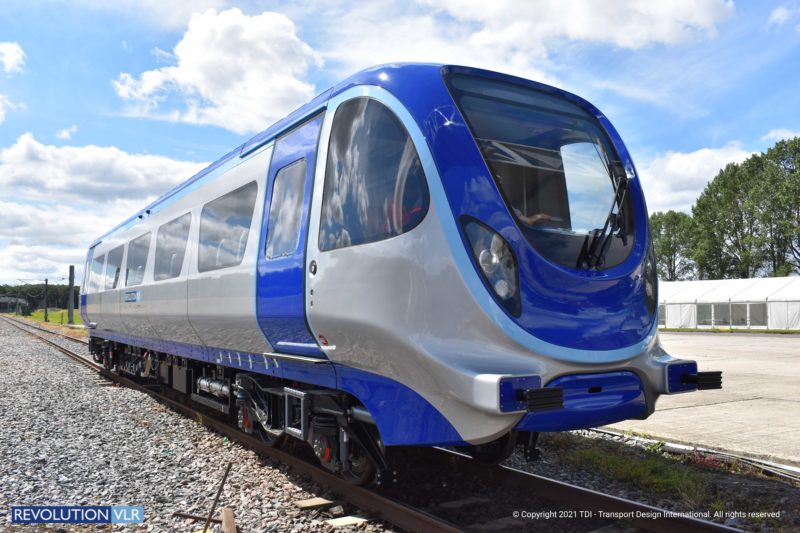Rail connectivity can be an issue for some places – with rolling stock expenses being a key issue, as well as the cost of additional infrastructure to support a rail service.
Revolution’s “Very Light Rail” test vehicle has completed assembly – could it help fill in those gaps?
What is Very Light Rail?
A good question – Very Light Rail will use lightweight, energy-efficient rail vehicles that offer low manufacturing and operational costs, with the vehicle coming in at under 1 tonne per linear metre.
In turn, these light vehicles could be used to increase mobility in cities, reopen disused branch lines across the UK, and more., as well as support extensions to lines that may have less usage density than the core part of a line.
Warwick University is leading the charge, with an innovation centre, working on a project in Coventry, as well as the Revolution Very Light Rail vehicle.
What is Revolutions Very Light Vehicle?
Examining the design, it is a single-car design, with bogies as opposed to Pacer Rail-bus design.
The vehicle bodyshell is constructed from recycled carbon fibre and uses a modular design. It is powered by a hybrid diesel-electric powertrain, adapted from automotive engine technology, which allows a maximum speed of 65mph/105kph.
Current design considerations call for a 56-seater design, in an 18.5-meter carriage that contains the powerplant.
A lithium titanate battery pack provides zero-emissions operation in stations and built-up areas and when at speeds of up to 20 mph.
What happens next?
The Demonstrator will now undergo a series of validation tests at the Quinton Rail Technology Centre in Long Marston, after which it will be moved to a rail-connected site in Ironbridge ready for launch.
Demonstrations to potential sponsors and operators will start in October 2021.
In Quotes
Tim Burleigh, Head of External Relations Eversholt Rail said:
“This marks a major milestone for us and is the result of excellent teamwork by everyone involved. Revolution VLR’s design and performance characteristics make it an attractive and sustainable rolling stock solution for many of the line reopenings being proposed through the ‘Restoring Your Railway’ programme. It is highly cost-effective, which will assist scheme sponsors in developing compelling business cases against the backdrop of an increasingly challenging economic environment.”
Darren Smith, Head of Transport Design International (TDI) said:
“Revolution VLR is the culmination of significant hard work and commitment for all involved and TDI are immensely proud to have led the consortium which has delivered this ground-breaking vehicle. TDI is at the forefront of developments in Very Light Rail and specialists in utilising light weighting technologies within the rail industry. Our team of designers and engineers have combined the latest developments from the automotive and rail sectors to produce this first of a kind demonstrator vehicle, and we are hugely excited about the future of Revolution VLR as a genuine game-changer within the rail industry. Congratulations must go to everyone who has been involved in bringing this project to life”.
Luisa Moisio, Head of Research and Development RSSB said
“RSSB is proud to be part of the consortium which initiated the development of the Revolution VLR to combine the best of state-of-the-art technology from both rail and automotive sectors to offer a significantly cheaper and lower emission solution for branch lines. We are excited about the Revolution VLR demonstrator vehicle’s fast progress toward launch later this year. This is proof of the great innovation that can and will take place when boundaries are pushed, radical ideas are encouraged and adequately supported, and strong collaborations across the transport sector are established and fostered.”
Developing a business case
For a design like this to succeed it will need to meet the safety standards that you would expect – either on a national network, or when trying to run on a preserved line, as well as low costs.
Certainly, a better definition of “Very Light Rail” would also help in enabling opening these lines – for example, converting a heritage line to a regular operation, or defining what infrastructure requirements would need to be met to allow a safe operation to be conducted.
It’s a very interesting concept to say the least, as we seek to enable the modal shifts we are seeking these days – both in terms of passenger and freight.
It’ll be interesting to see how the validation goes, as well as which companies are interested to enable the development of a business case – off the top of my head, I can think of a few lines where such a train could really be a valid use case to make the use of this type of train viable, as well as the possible integration beyond isolated lines and railheads on to the national rail network.
For those of you who want to explore, Revolution has a very good presentation on its site at https://revolutionvlr.com/.
Welcome to Economy Class and Beyond – Your no-nonsense guide to network news, honest reviews, featuring in-depth coverage, unique research, as well as the humour and madness as I only know how to deliver.
Follow me on Twitter at @EconomyBeyond for the latest updates! You can follow me on Instagram too!
Also remember that we are part of the BoardingArea community, bringing you the latest frequent flyer news from around the world.

